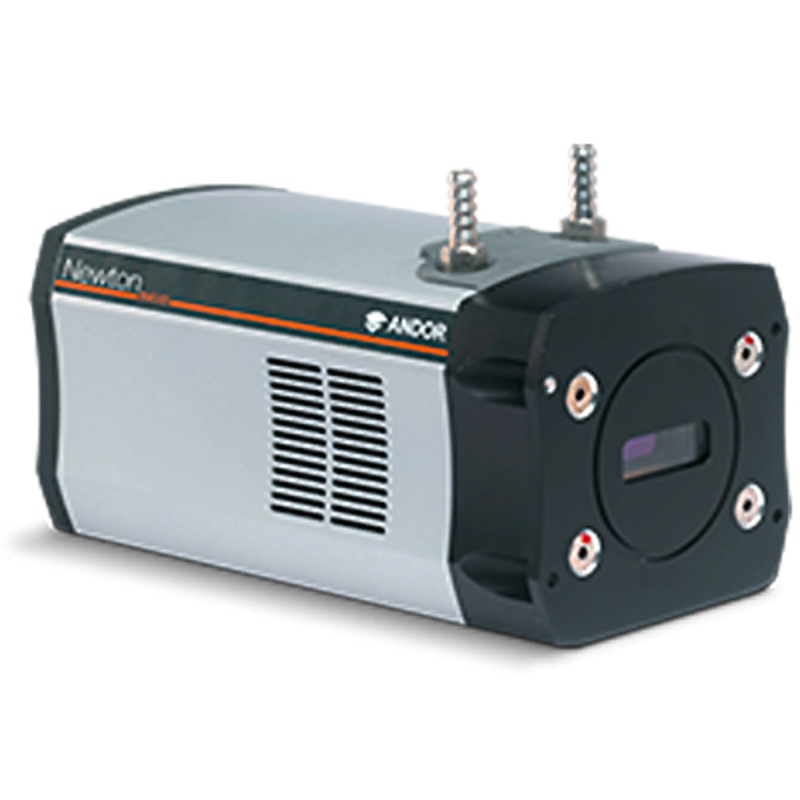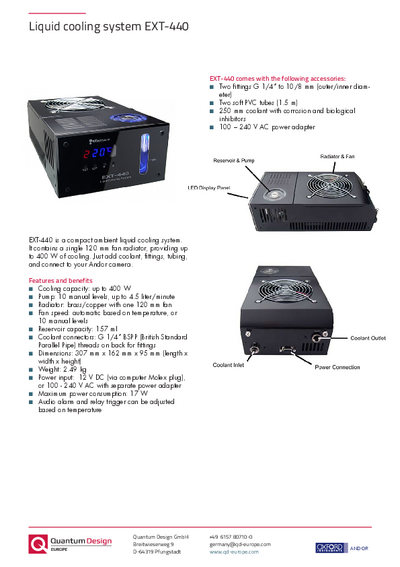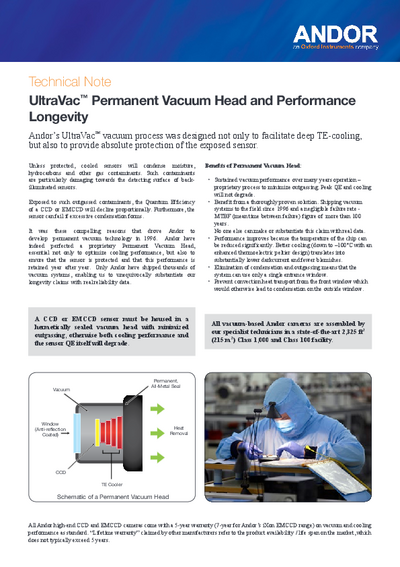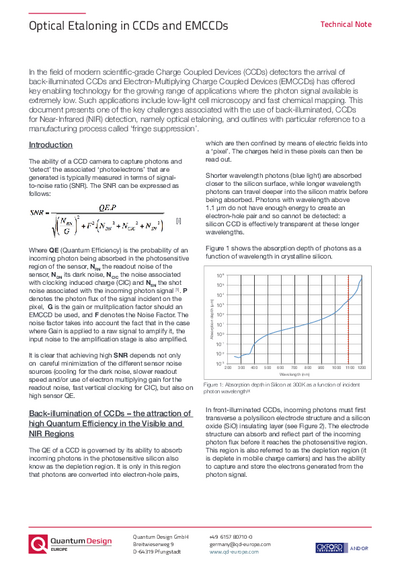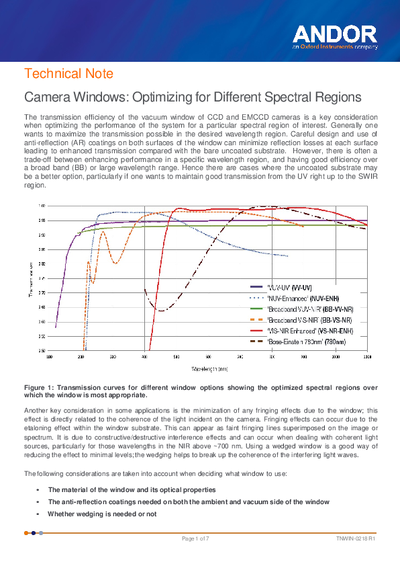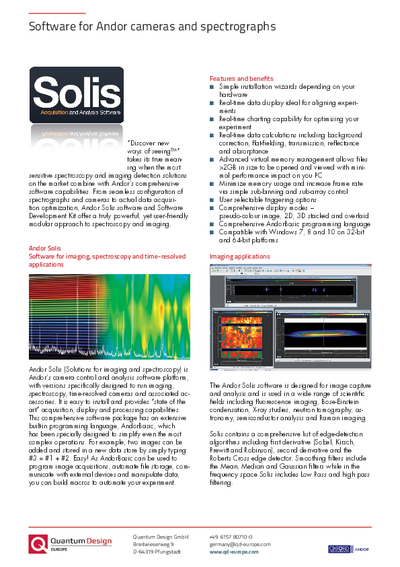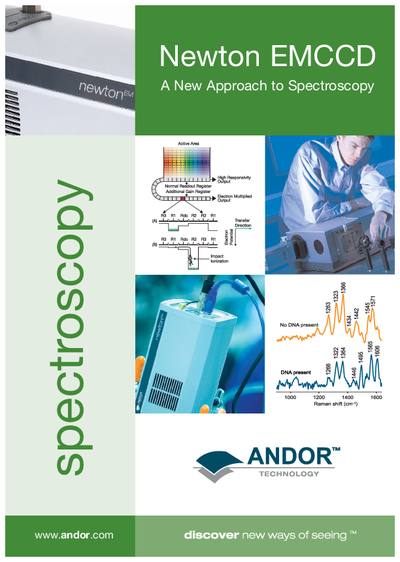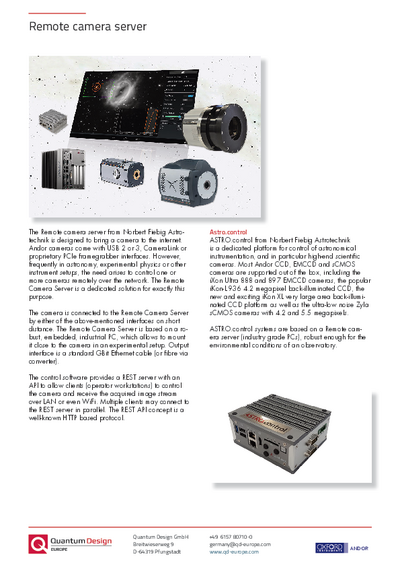EMCCD-Detektoren für die Spektroskopie
Serie Newton von Oxford Instruments AndorFür Anwendungen in der Spektroskopie, bei denen extrem hohe Empfindlichkeit gefordert ist, bietet Oxford Instruments Andor die EMCCD-Kameras Newton 970 (1600 x 200 x 16 µm Pixel) und Newton 971 (1600 x 400 x 16 µm Pixel) mit USB-2-Schnittstelle an. Der EMCCD-Sensor der Newton-Detektoren ist in einer abgedichteten Vakuumkammer untergebracht, so dass Temperaturen bis -100 °C mit thermoelektrischer Kühlung erreicht werden können.
- Effektives Ausleserauschen < 1 Elektron mit EM-Verstärkung für Einphotonen-Empfindlichkeit
- Zwei EMCCD-Sensorformate (1600 x 200 x 16 µm und 1600 x 400 x 16 µm) für hoch auflösende Spektroskopie
- Schnelle Spektrenraten bis 396 Spektren/Sekunde (Newton 971) bzw. 649 Spektren/Sekunde s (Newton 970) im Full-Vertical-Binning- und > 1.500 Spektren/Sekunde im Cropped-Sensor-Modus
- Front- und Back-Illuminated-Sensoren mit > 90% Quanteneffizienz, optimiert für UV, VIS und NIR (mit Technologie zur Streifenunterdrückung für den Back-Illuminated-Sensor der Newton 970)
- Thermoelektrische Kühlung der EMCCD Sensoren bis -100 °C für vernachlässigbar geringen Dunkelstrom
Weitere Informationen
Die Newton-EMCCD-Detektoren sind marktführende Produkte für die ultra-empfindliche und ultra-schnelle Spektroskopie. Die Elektronenvervielfachungstechnologie verstärkt die Ladung jedes einzelnen Pixels vor dem Auslesen auf dem Sensor und ermöglicht damit eine Einzelphotonenempfindlichkeit. Mit einem Array von 1600 x 200 oder 1600 x 400 hoch auflösenden 16 μm großen Pixeln, einer rauscharmen Elektronik, hoher Quanteneffizienz und einer thermoelektrischen Kühlung bis -100°C für extrem niedrigen Dunkelstrom, einer Auslesefrequenz von 3 MHz und einem Plug-and-Play-USB2.0-Anschluss bietet die Newton-EM-Plattform eine unvergleichliche Leistungsfähigkeit für anspruchsvolle Aufgaben in der Spektroskopie. Dank Verstärkern mit zwei Ausgängen kann über Software entweder ein Ausgang mit konventioneller hoher Empfindlichkeit oder ein elektronenvervielfachender Ausgang gewählt und damit den Anforderungen einer Vielzahl unterschiedlicher Photonenmodi Rechnung getragen werden. Damit sind die Newton-EMCCD-Kameras eine hervorragende Lösung für ultraschnelle Spektroskopie bei schwachem Licht.
Spezifikationen
Anwendungen
Downloads
Videos
Referenzkunden
| Title | Author(s) | Institute | Year | Detector/Spectrograph |
|---|---|---|---|---|
| Raman | ||||
| Raman-Line imaging to investigate occurring transport mechanisms in aerogel production | J. Quino | Institute of Engineering Thermodynamics, Erlangen Untiversity, Germany | 2017 | Newton DU971P-BV, Shamrock SR-303i-A |
| Polarization-sensitive spontaneous Raman scattering spectroscopy | S. Rieger, C. Mannweiler, C. Fallnich | Institute of Applied Physics, University of Münster, Germany | 2016 | Newton DU970P-BVF Shamrock SR-500i-D1-SIL |
| Ultrafast time- and frequency- resolved coherent anti-Stokes Raman spectroscopy (CARS) with femtosecond excitation and picosecond probing | M. Lütgens, S. Chatzipapadopoulos, S. Lochbrunner | Institute of Physics, University of Rostock, Rostock, Germany | 2014 | Newton DU970P-BV |
| Raman-Line imaging to monitor diffusion kinetics | O. Knauer | Institute of Engineering Thermodynamics (LTT) and Erlangen Graduate School in Advanced Optical Technologies (SAOT), University Erlangen-Nuremberg, Germany | 2013 | Newton DU971N-BV |
| Increase of the threshold for stimulated Raman scattering by a spectral broadening of the excitation source | R. F. Hankel | Technical Thermodynamics, University of Erlangen-Nürnberg, Germany | 2012 | Newton DU971N-BV |
| Multiplex CARS Microscopy | T. Buckup, C. Pohling, M. Motzkus | Insitute of Physical Chemistry, University of Heidelberg, Germany | 2011 | Newton DU970N-BV |
| Tip-enhanced Raman spectroscopy with ultra high sensitivity | B. Pettinger, P. Schambach, N. Scott | Fritz Haber Institute of the Max Planck Society, Berlin, Germany | 2011 | Newton DU970N-BV |
| Using an EMCCD camera for high resolution one-dimensional Raman spectroscopy | O. Knauer | Institute of Technical Thermodynamics, University Erlangen-Nürnberg, Germany | 2010 | Newton DU971N-BV |
| Sum-frequency generation | ||||
| Spectrometer for broadband vibrational sum-frequency generation at fluid interfaces | N. García Rey, | Institute of Physical Chemistry, Westfälische Wilhelms-Universität Münster, Germany | 2019 | Newton DU970P-BVF Kymera-328i-D2-SIL |
| Spectral characterization of quantum light from an engineered Type-II sum-frequency generation process | M. Allgaier, V. Ansari, L. Sansoni, V. Quiring, R. Ricken, H. Suche, B. Brecht, C. Silberhorn | Integrated Quantum Optics Group, Department of Physics, University of Paderborn, Germany | 2016 | Newton DU970P-BVF Shamrock SR-500i-D1-SIL |
| Optically probing surface phonons using surface specific vibrational spectroscopy | R. Kramer Campen | Fritz Haber Institute of the Max Planck Society, Berlin, Germany | 2015 | Newton DU971P-BV |
| Enhanced ordering of water at hydrophobic surfaces measure with vibrational sum-frequency generation | J. Versluis, S. Strazdaite, H. J. Bakker | Ultrafast Spectroscopy, FOM Institute AMOLF, Amsterdam, The Netherlands | 2015 | Newton DU970P-BV |
| Femtosecond time-resolved electronic sum frequency generation for the investigation of optoelectronically relevant interfaces | L. Foglia, M. Wolf, J. Stähler | Fritz Haber Institute of the Max Planck Society, Berlin, Germany | 2015 | Newton DU970P-BV |
| Monolayer detection with sum-frequency generation spectroscopy | E. H. G. Backus, T. Weidner | Max Planck Institute for Polymer Research, Mainz, Germany | 2014 | Newton DU970P-BV |
| Interfacial Water Structure studied by Vibrational Sum Frequency Generation | M. Sovago, M. Bonn | AMOLF, Amsterdam, The Netherlands | 2009 | Newton DU970N-BV |
| Plasma | ||||
| Spectroscopic investigation of level population of sputtered tungsten in the linear plasma device PSI-2 | S. Ertmer, S. Brezinsek, A. Pospieszczyk, O. Marchuk, A. Kreter | Institute of Energy and Climate Research - Plasma Physics, Forschungszentrum Jülich GmbH, Association EURATOM-FZJ, Partner in the Trilateral Euregio Cluster, Jülich, Germany | 2019 | Newton DU971P-UVB Acton SpectraPro 750 |
| Ambient humidity has minor influence on OH emission of an atmospheric pressure argon plasma jet than feed gas humidity | J. Winter, M. Hänel, M. Dünnbier, S. Reuter | Centre for Innovation Competence (ZIK) plasmatis, Leibniz Institute for Plasma Science and Technology e.V. (INP Greifswald), Germany | 2014 | Newton DU971P-UVB |
| Spectroscopic Characterisation and Plasma Surface Interaction Experiments with the linear Plasma Simulator PSI-2 | S. Brezinsek, A. Pospieszczyk, A. Kreter, M. Laengner, M. Reinhart, B. Schweer, B. Unterberg | Institute for Energy- and Climate Research, Research Center Jülich, Association EURATOM-FZJ, Trilateral Euregio Cluster, Jülich, Germany | 2012 | Newton DU971P-UVB |
Spektral aufgelöste Beobachtung des Wiedereintritts der STARDUST-Kapsel | M. Winter, G. Herdrich | Institute of Space Systems, University of Stuttgart, Germany | 2006 | Newton DU971N-UVB Acton SpectraPro 300 |
| Fluorescence | ||||
Custom Designed Fluorescence Enhancing Hot Spot | M. Hallermann | Department of Physics and Center for NanoScience, Ludwig Maximilians University Munich, Germany | 2009 | Newton DU971N-UVB |
Trapped Ion Laser Induced Fluorescence | M. Kordel, L. Walter, D. Schooss, M. M. Kappes | Intitute of Nanotechnology, Karlsruhe Institute of Technology, Germany | 2008 |
|
| Photoluminescence | ||||
| Photoluminescence and valley polarization in two-dimensional semiconductors | R. H. Godiksen, A.G. Curto | Department of Applied Physics and Institute for Photonic Integration, Eindhoven University of Technology, Eindhoven, The Netherlands | 2019 | Newton DU970P-FI Shamrock SR-303i-A-B-SIL |
| Mikrophotolumineszenz- Spektroskopie von Halbleiter- Quantenpunkten | M. Kahl, R. Bratschitsch | Institute of Modern Optics and Quantum Electronics, University of Konstanz, Germany | 2007 | Newton DU970N-BV Acton DSP2500 |
| Frequency-resolved optical gating | ||||
| Sensitive interferometric frequency-resolved optical gating with an EMCCD based spectrometer | S. K. Das, M. Bock, G. Steinmeyer, R. Grunwald, T. Elsaesser | Max Born Institute for Nonlinear Optics and Short-Pulse Spectroscopy, Berlin, Germany | 2013 | Newton DU970N-UVB |
Kontakt
| +49 6157 80710-690 | |
| +49 6157 807109690 | |
| E-Mail schreiben |
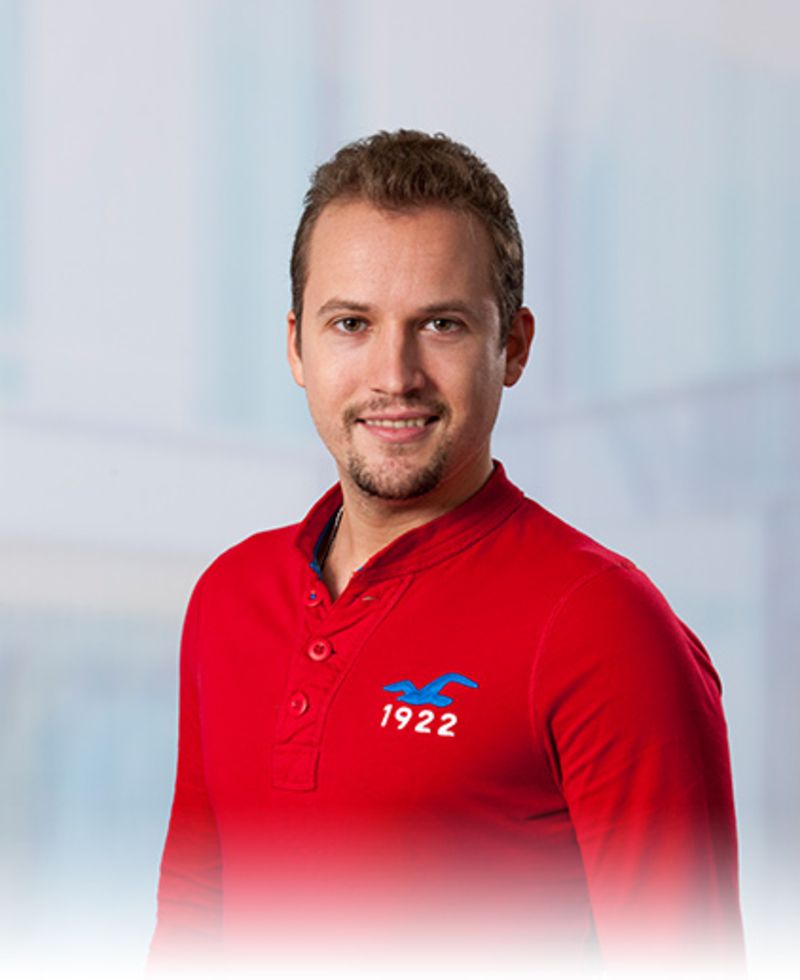
| +49 6157 80710-692 | |
| +49 6157 807109692 | |
| E-Mail schreiben |
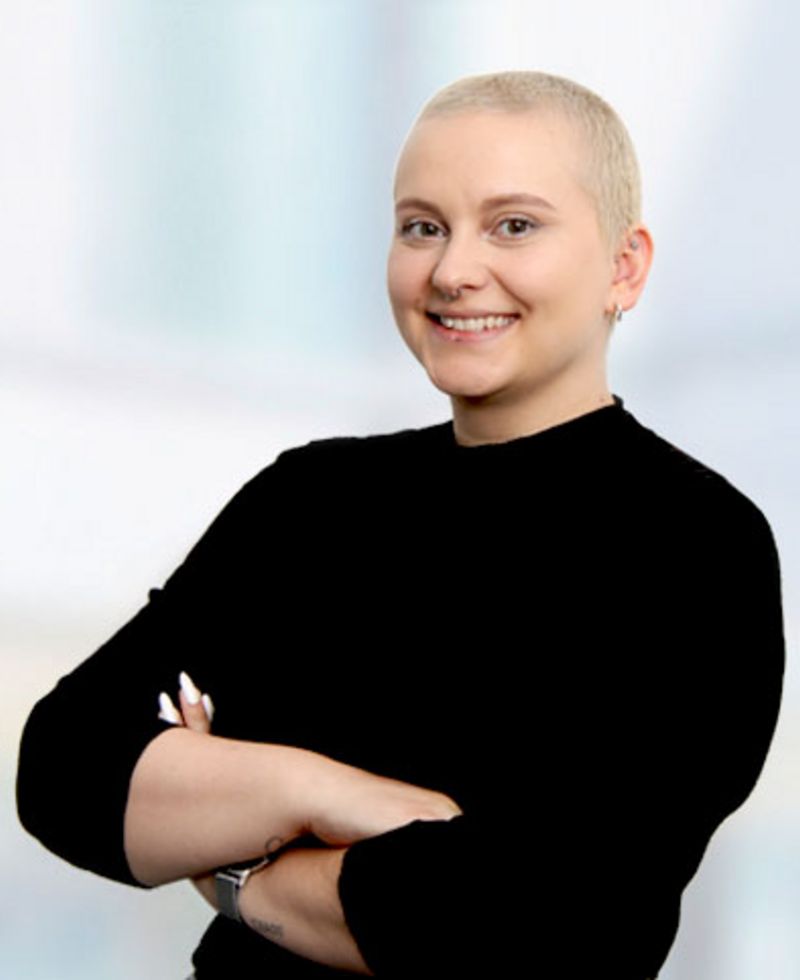
| +49 6157 80710-754 | |
| +49 6157 807109754 | |
| E-Mail schreiben |


